There's something magical about watching nature unfold right in your own backyard. This week, I fell under the spell of orchard mason bees. After offering an untouched bee nesting box for several years, I was joyful to find that, this spring, these gentle, industrious pollinators have finally settled in, just off my front porch.
A Home for Baby Bees
Last week, my friend Molly and I were soaking up the unseasonably warm spring sun as we lolled about on my front porch when she noticed several fly-sized, glossy green bees hanging around. I thought they were hover flies until I noticed their interest in the bee box. Upon further investigation I noticed the the box’s bamboo tubes were nearly all sealed up by small, tidy dollops of mud. Moments later, a bee alit and disappeared inside a vacant tube.
To my great delight, I was now in the company of orchard mason bees!
Since my discovery, I’ve been relentlessly stalking my new buzzy friends. Yesterday I spent nearly an hour checking on the progress of a female mason bee returning repeatedly to one of the tubes. Her metallic blue-green body flashed in the morning light as she disappeared inside, staying hidden for a minute or so before zooming off. A few minutes later, she returned - repeating the process a dozen times. Peering in while she was away, I could see that each time she visited, there were more mud balls filling the tube. Eventually, under her meticulous care, the tube was fully sealed. Throughout the day, every time I stopped to check, another tube was filling with mud.
The Mason Bee Life Cycle
Not really knowing much about the mason bee life cycle, all of this activity prompted my curiosity.
I learned that I was witnessing the final act in the bee’s reproductive cycle - she had laid eggs inside the nesting tubes, provisioned them with pollen, and was now protecting her offspring with a mud plug.
Orchard mason bees have a single generation per year. The adults I'm seeing now emerged from cocoons where they spent the winter. After mating, females like the one I observed, collect pollen and nectar, forming it into a little mound inside a nesting cavity to provide food for the larva. They lay a single egg, then create a mud partition before repeating the process in the next section of the tube. Each tube may contain 5-8 cells, with female eggs typically placed deeper inside and male eggs closer to the entrance so they emerge first. How amazing is it that they can sort their eggs like that??
The eggs hatch in just a few days into larvae that feed on the pollen provisions. They develop through the summer, and spin cocoons by fall. They transform into adults by late autumn but remain in diapause inside their cocoons through winter, waiting for spring temperatures to trigger their emergence. The males come out first, with females following days later to breed. The males die after mating, living just a few weeks. The females live a few weeks longer - just enough time to gather pollen and lay eggs.
It’s mind blowing that this creature has evolved such a fascinating life cycle that results in adults being out in the world and active for only a few weeks, with the rest of their time spent sealed tightly in their dark chambers.

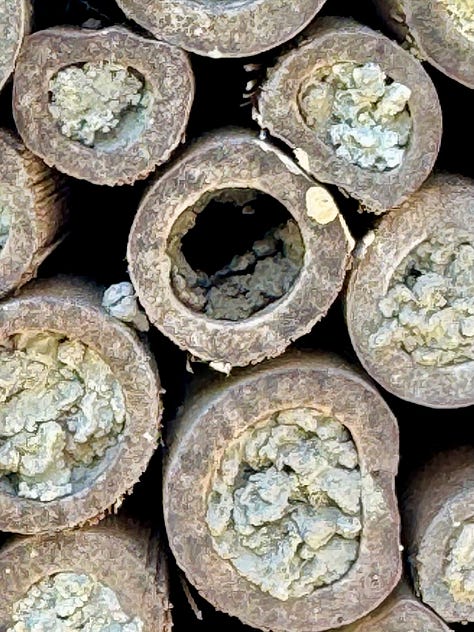

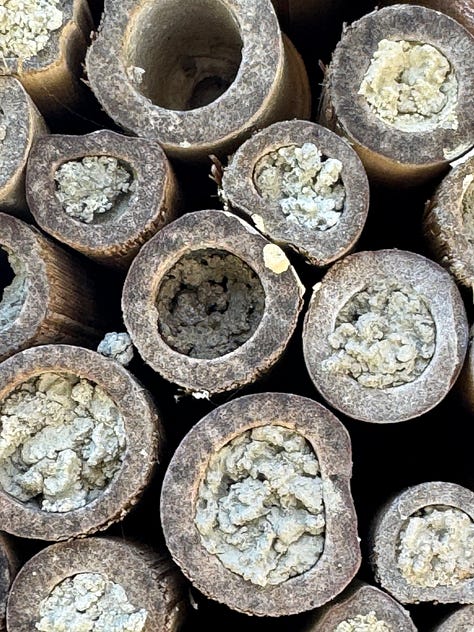
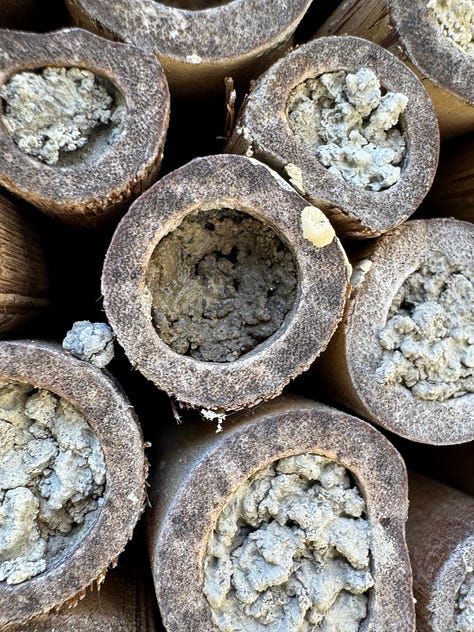
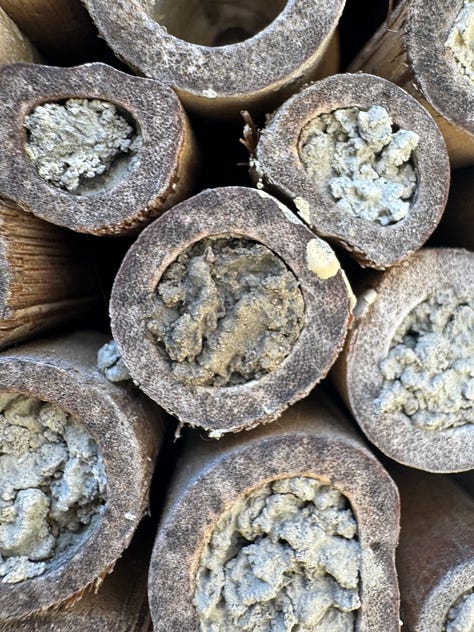
Conservation Champions
Everyone would do well to host these little bees, for they are powerhouse pollinators. Unlike honeybees, mason bees are solitary natives that evolved alongside our local plant species. A single female mason bee can pollinate as many flowers as 100 honeybees! Their foraging style - visiting flowers in a scattershot pattern and carrying dry pollen loosely on their abdomens - makes them incredibly efficient pollinators, especially for fruit trees (hence their "orchard" name).
A large cherry tree in my front yard recently exploded in bloom and I suspect that is the source of most of my bees’ food. I love knowing that those beautiful flowers sustain the next generation of these bees all year long.
Open Your Home to Mason Bees
If you have a garden, consider becoming a mason bee host. These gentle creatures rarely sting (only when trapped or squeezed), don't produce honey to defend, and require minimal maintenance compared to honeybee hives. All they need is:
A simple nesting box with tubes or holes 5/16" in diameter. (Mason bees are very adaptable and will use hollow twigs, abandoned beetle burrows as nests without our help.)
A location with morning sun and afternoon shade
A source of mud nearby
Early spring flowers for food
In return, they'll increase your garden's productivity while helping support native pollinator populations that face serious threats from habitat loss, pesticide use, and climate change.
The decline of pollinators worldwide is a serious concern, but each of us can make a difference right in our own backyards. By creating habitat for native bees like the orchard mason bee, we're contributing to biodiversity conservation in a tangible, visible way.
I never expected to become so invested in these tiny creatures, but watching them go about their important work has given me a deeper connection to the natural cycles happening all around us. There's profound satisfaction in knowing that by providing a simple wooden box, I've helped create a home for future generations of these remarkable pollinators.
The Joy of Noticing
There's a special kind of mindfulness that develops when you begin paying attention to creatures as small as mason bees. In our hyper-connected world, I've found profound peace in simply sitting still, watching these tiny pollinators go about their ancient work. It requires slowing down - really slowing down - to notice the slight differences in their flight patterns, the careful way they inspect each nesting tube, or how the morning light catches their iridescent wings.
These moments of connection with the smaller mysteries of nature have become anchors in my day, reminding me that there is wonder everywhere if we only take the time to look. I love knowing that my little garden has become host to these tiny wild lives that are mostly lived beyond the fringes of human notice. I will always keep looking.







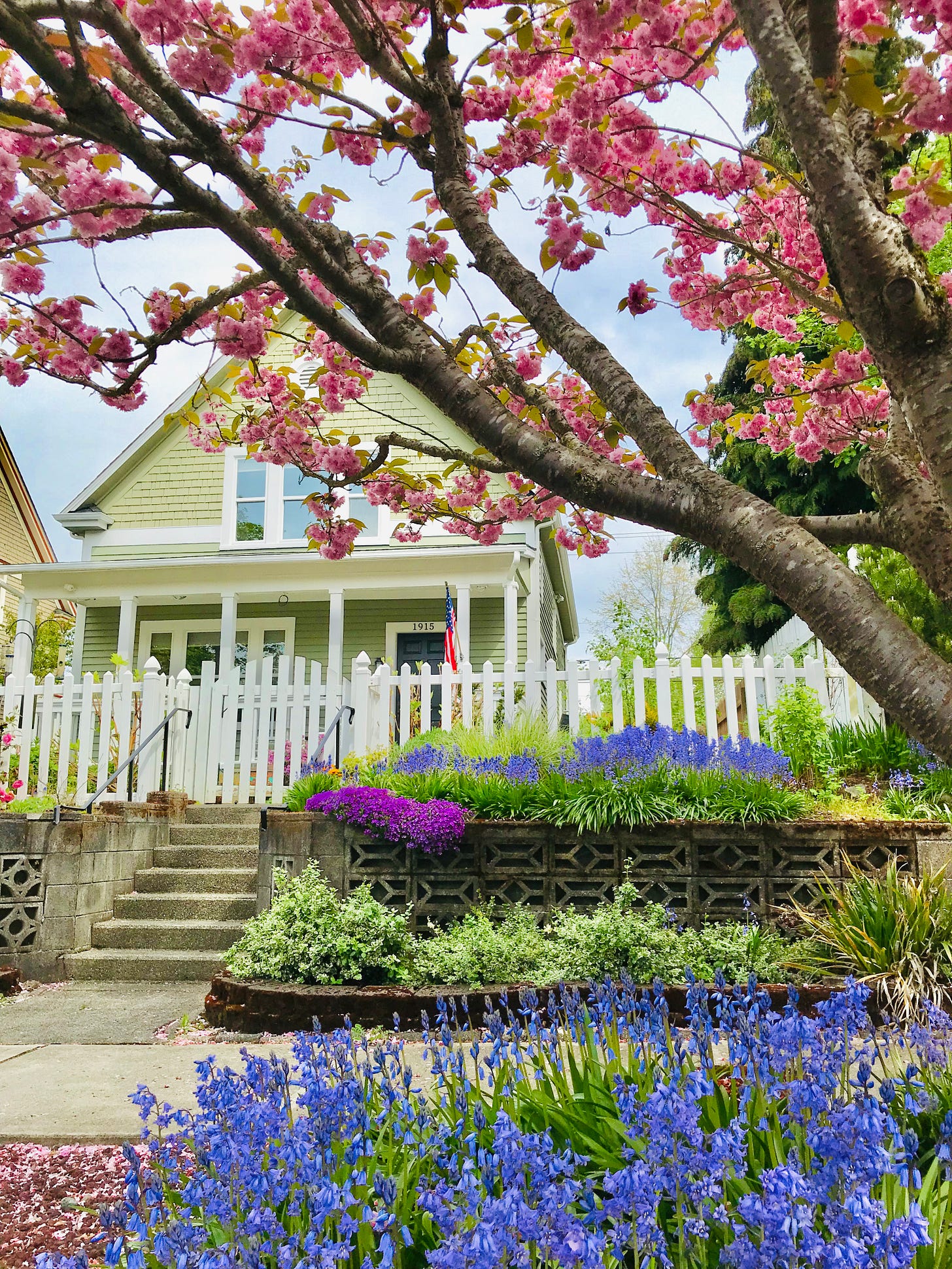
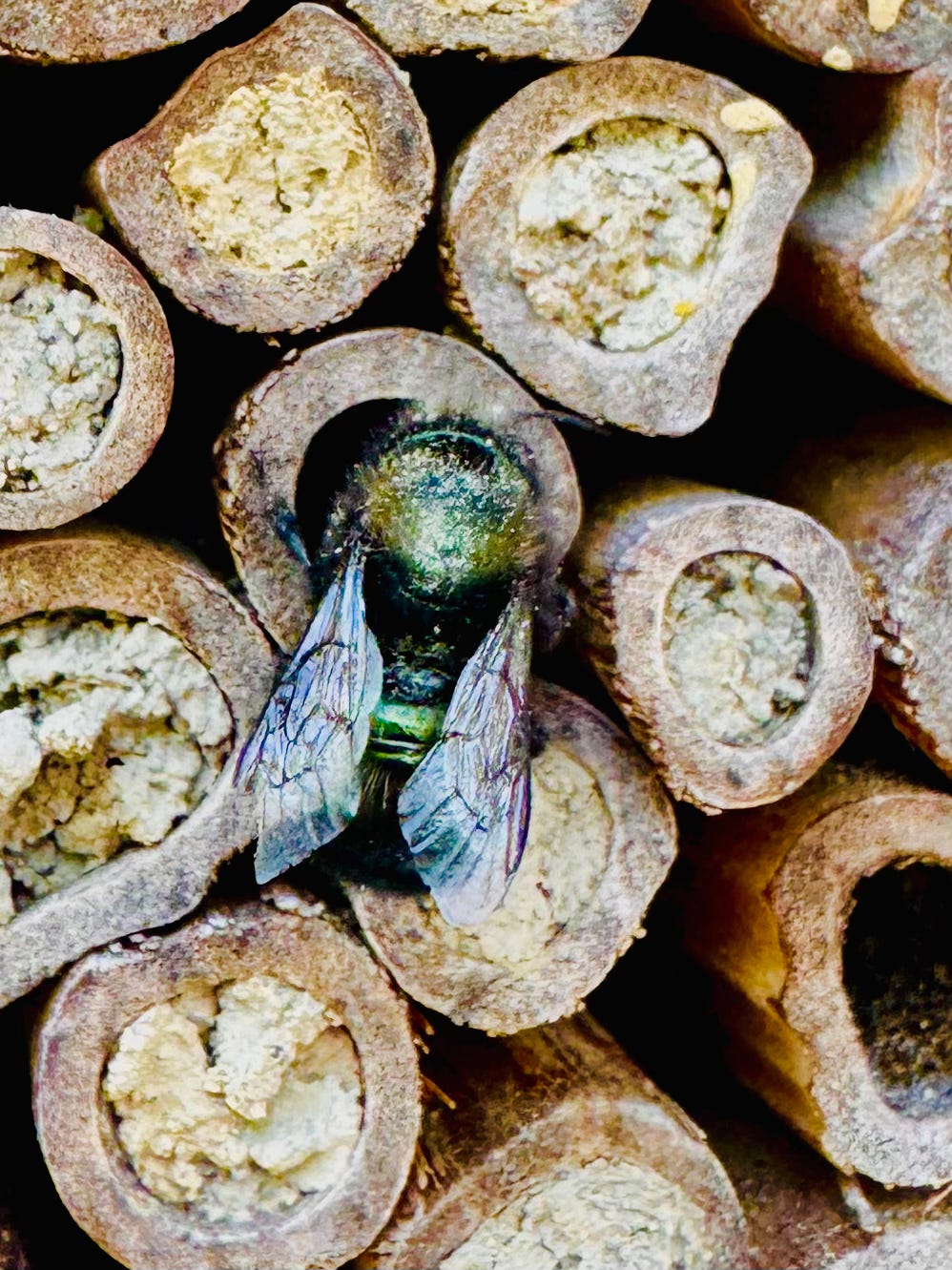
I'd never heard of those bees. How wonderful to watch the miracles of nature. Keep on keeping on. Your flowers are beautiful. Thatr's a treat also.
Thank you so much for all the info and cool photos - you've inspired me!